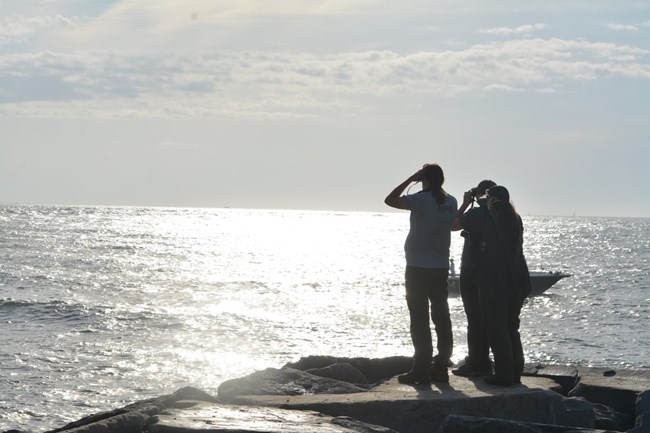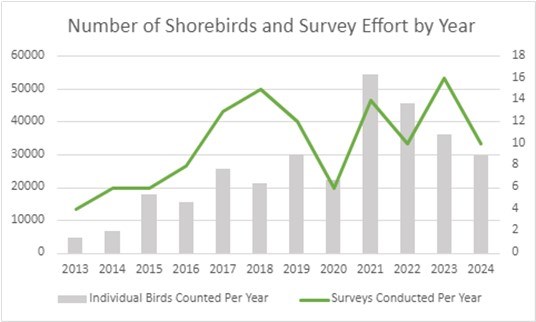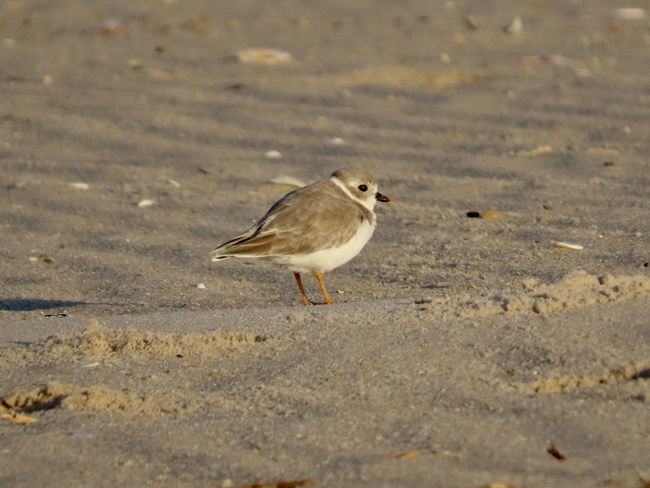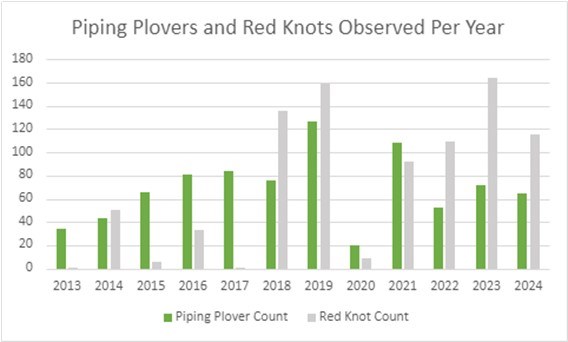Last updated: December 9, 2024
Article
Contributions to the International Shorebird Survey at Assateague Island, MD

NPS
Background
The International Shorebird Survey (ISS), organized by Manomet Conservation Sciences, began in 1974 as a volunteer-led effort to understand shorebird populations and their migration patterns, as well as identifying key locations being used by shorebirds during migration.The project has grown substantially, beginning with surveys at under 100 sites to reaching over 1,300 survey sites in 2023. Survey sites can now be found in North, Central, and South America and over 100,000 surveys have been conducted. 2024 is the 50th anniversary of the ISS, an important milestone for the efforts of hundreds of contributors to the collaborative project!

NPS
ISS at Assateague Island
Assateague Island National Seashore (MD) has been participating in the ISS since 2013. Five survey plots of similar length and width were established along the island coast to collect data on the variety of shorebird species across the island. Park staff and interns drive each survey plot, counting shorebirds and potential disturbances such as people, vehicles, and dogs. While Assateague Island is home to a large variety of birds, only shorebirds are counted during the ISS.Some of the most seen species on the island during the ISS include the piping plover, American oystercatcher, sanderling, willet, ruddy turnstone, semipalmated plover, black-bellied plover, semipalmated sandpiper, least sandpiper, and whimbrel. Highlighted species infrequently observed include the Wilson’s plover, American golden plover, short-billed dowitcher, and marbled godwit amongst others.
In the early years of the ISS at Assateague Island, surveys were mainly done in April and May to gather data on spring migration of shorebirds, and in September and October for fall migration. 2020 was a difficult year for contributing to the ISS, as the pandemic impacted the ability to conduct surveys as a group. In more recent years, however, survey efforts have increased. Additional surveys have been added in the spring/summer and as late as November to capture the end of fall migration, when certain shorebirds such as the red knot and dunlin can still be seen. Surveys are conducted 2-3 times a month.
Results
Across the surveys conducted at Assateague Island, 309,331 shorebirds have been counted since 2013 with an average of 25,778 birds counted per year. Typically, around 15 species of shorebirds are observed on the island during the ISS, but some years have found up to 19 species utilizing the island for migration stopovers.
NPS

NPS

NPS
Discussion
The ISS continues to be a useful tool in monitoring shorebird populations and migration at Assateague Island and comparing to regional and hemispheric trends.All data collected for the ISS is publicly available on eBird and through Manomet Conservation Sciences. The organization has developed mapping tools that you can use by species, location, month and/or year to give you more information on trends in migration for shorebirds. Researchers have utilized ISS data for species specific and regional trend analyses and have recently documented and published a paper on accelerating declines of North America’s shorebirds (Smith et al 2023; see here).
For more information on ISS and to access the mapping tools, please visit Manomet Conservation Sciences’ site.
Written by Emily Paciotta, Biological Science TechnicianPark Contact: Lindsay Ries, Biologist
